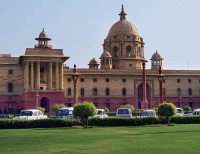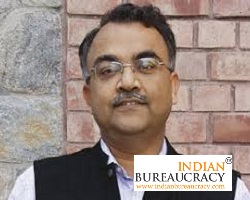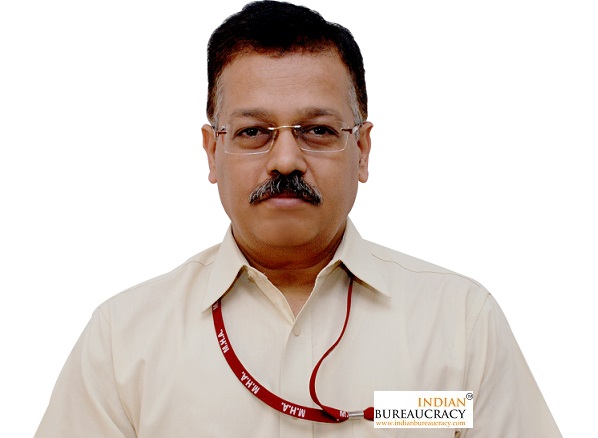
Government plans to provide loan worth Rs. 90,000 Crore in next couple of years to Women Self-Help Groups, SHGs for non-farm economic activities. Addressing a National Workshop here on Best Practices in National Rural Livelihoods Mission (NRLM), Secretary, Rural Development Shri Amarjeet Sinha said that at present 3 crore women are linked to Aajeevika Mission and they availed about Rs 30,000 crore bank loans for economic activities. NRLM is an innovative flagship programme designed to alleviate rural poverty in a time-bound manner. Launched in 2011, the Mission aims at mobilizing all rural poor households into self-managed Self Help Groups (SHG) and federations which, in turn, promote the livelihoods of the poor.
The centrally sponsored Mission is currently being implemented in 3157 blocks across 462 districts by all states and Union territories in a phased but intensive manner. As of July, 2016, 324 lakh rural poor households stood mobilized into 26.94 lakh SHGs, which are in turn, federated into 1.45 village organizations. The states have set-up dedicated implementation structures at the state, district and block levels and have engaged more than 20000 dedicated professionals and about 1 lakh community professionals to implement the Mission. The Mission is designed to saturate social mobilization and SHG promotion in all blocks of the country during the next 3-4 years.
Shri Sinha also outlined the progress that the Mission has made in promoting farm-based livelihoods through Mahila Kisan Sashaktikaran Pariyojana and employment and self-employment through DDU-GKY and RSETI components. The Secretary indicated 4 critical tasks ahead for the Mission viz. (i) saturating social mobilization in all blocks of the country during the next 3-4 years; (ii) augmenting and sustaining SHG-credit linkage in North and North-eastern states; (iii) ensuring to each rural household 2-3 sustainable livelihoods including skill-based employment/ self-employment; and (iv) promotion of poverty-free Gram Panchayats with funds dovetailed from different sources including NREGS and 14th Finance Commission. Shri Sinha commended the states for several of their innovations and best practices and advised others to adopt them after necessary customization.
The Mission has made significant progress. The Mission has provided a capital grant of about Rs. 3170 crores to the SHGs and federations in the form of revolving fund, community investment fund and interest subsidy to support the livelihoods of the poor. The cumulative own savings of SHGs facilitated by the Mission in intensive blocks alone account for over Rs. 10665 crores (up to July, 2016). More significantly, the SHGs have leveraged Rs. 83153 crores of bank credit since FY 2013-14. The financial services catalyzed by the Mission coupled with the technical livelihood support services provided are securing livelihoods, reviving local economies and empowering women across the country
As part of NRLM, 34 lakh Mahila Kisans are being supported under Mahila Kisan Sashaktikaran Pariyojana component. In addition, about 19.70 lakh rural youth have been trained in self-employment skills through a network of 583 Rural Self Employment Training Institutes (RSESTIs), of whom 12.13 lakh have been settled in gainful self-employment. The Mission is poised for a big leap forward in livelihoods.
NRLM provides a substantial degree of autonomy to states to adopt innovative strategies, methods and processes in implementing the Mission. Further, states are also at different stages of implementation. Some have a longer history of promoting SHGs than others. The southern states are far ahead of others in mobilizing bank credit. Some states have adopted very successful models for institution building, financial inclusion and livelihoods promotion. Some have demonstrated scalable models with tangible livelihood outcomes. Successful models, innovations, experiments and practices demonstrated by different states can be adopted by others. It is in this context that MoRD is organizing a 2-day workshop on Best Practices in NRLM. The objective of the workshop is to facilitate sharing of experiences among the states and facilitate adoption of successful models by others. The workshop is, thus, expected to contribute to the pace and outcomes of the Mission.
About 35 best practices selected from 13 different states was presented at the workshop. The practices selected for presentation cover a wide range of themes viz. community institution building, financial inclusion of the poor, promotion of farm and non-farm livelihoods, food nutrition, health and sanitation, and convergence for livelihoods. The list of best practices is presented in attachment-I. The best practices presented at the workshop (documents and videos) will be compiled and published by the MoRD very shortly.
About 120 participants including CEOs and Mission Directors, officials from different Ministries, key professionals and community representatives from 29 states are attending the 2-day workshop.
IndianBureaucracy.com wishes the very best.





Leave a Reply
You must be logged in to post a comment.